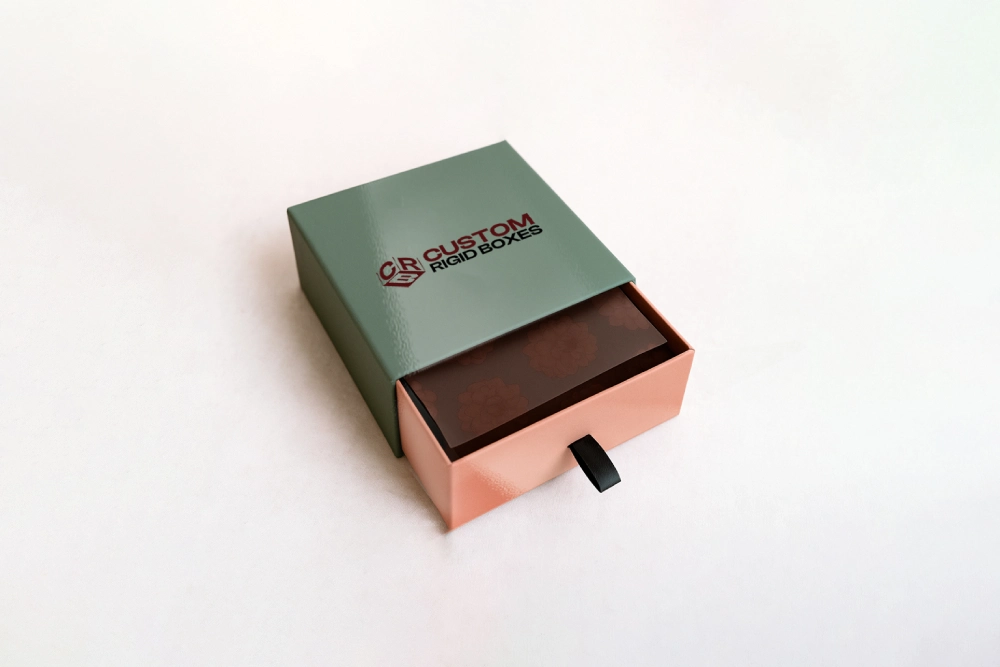With a growing number of brands offering similar products, product packaging needs to do more than just protect products. Instead, your custom packaging also needs to sell your brand. This is where special finishing techniques, such as foil stamping, come in handy.
What is the foil stamping technique? This touch is one of the most effective ways to create a premium finish, transforming simple packaging into something luxurious. How? This ultimate guide explains the essentials of this popular printing technique.
What is Foil Stamping?
In brief, foil stamping is a specialized printing process that applies a thin layer of metallic or pigmented foil to a surface. The modern technique, known as hot stamping, was first developed in the late 19th century.
The best part? It uses no ink. Instead, the process relies on heat, pressure, and a custom-made metal die to bond the foil to the printed material. Just as with soft-touch coating and Spot UV, you can apply foil stamping to a wide range of paper stocks.
However, this technique works best for product packaging with a smooth, even surface, such as custom printed rigid boxes. Yes, foil stamping can be applied to both types of rigid boxes, whether partial- or full-finish.
The result?
A vibrant, reflective, and durable design that stands out visually and texturally. This method is often used to highlight business logos, text, or decorative elements.
Hot Foil Stamping vs Cold Foil Stamping
As you browse about foil stamping, you may come across the two options: hot foil stamping and cold foil stamping. What’s the difference between the two?
The main difference lies in the application method. As the name suggests, hot foil stamping uses heat and pressure with an engraved die. On the other hand, cold foil stamping uses a UV-cured adhesive applied via standard printing plates.
The different application methods lead to key differences in material compatibility, finish, and cost. Hot foil is known to be better for heat-sensitive materials and smaller details. Meanwhile, cold foil is more flexible and cost-effective for full coverage and faster production.
Along with technological advancements, there is a third option: digital foil stamping, which uses a digital printer to apply foil without a die. This newest technique is ideal for short runs and complex, variable-data designs.
Check out the complete differences between hot foil stamping and cold foil stamping.
| Feature | Hot Foil Stamping | Cold Foil Stamping |
| Application | Uses heat and pressure with an engraved die | Uses a UV-cured adhesive applied via standard printing plates |
| Finish & Appearance | A high-end, glossy finish with tactile effect | A high-shine finish |
| Speed & Flexibility | Cost-effective for long runs | Cost-effective for short runs |
Overall, both hot and cold foiling offer you the chance to embellish your custom boxes and add an elegant touch. The choice between them depends on your specific requirements and desired outcome.
How Foil Stamping Works?
With the rising demand for premium packaging boxes for luxury products, hot foil stamping today is the most common method for many businesses.
How does foil stamping work?
The process is highly precise and involves several key steps below.
Design Preparation
Your desired artwork (logo, text, graphic) is prepared digitally. The design must be vectorized for proper plate creation.
Die Creation
A custom metal die is engraved with the design. These dies are typically made from durable materials like brass, copper, or magnesium. Thus, they can last for over a million uses.
Machine Setup
The metal die is then mounted on a hot-stamping machine and heated to a specific temperature, often between 200 and 300°F (93-149°C). At the same time, the foil roll is positioned above the substrate (the material being stamped).
Application of Heat and Pressure
The heated die presses the foil firmly against the packaging material. The heat activates a special adhesive layer on the foil’s backing.
Bonding and Release
The combination of heat and pressure causes the adhesive to bond the pigment layer to the surface. A release layer melts away, allowing the excess foil carrier film to be pulled away.
Finishing
Finally, the die is lifted, and the excess foil is removed.
The entire process creates a clean, crisp, permanent foil design only where the die made contact.
Types of Foils Used in Hot Stamping
The variety of available foils allows for endless design possibilities. Each type creates a unique visual and tactile effect for your packaging boxes.
Let’s break it down!
Metallic Foil
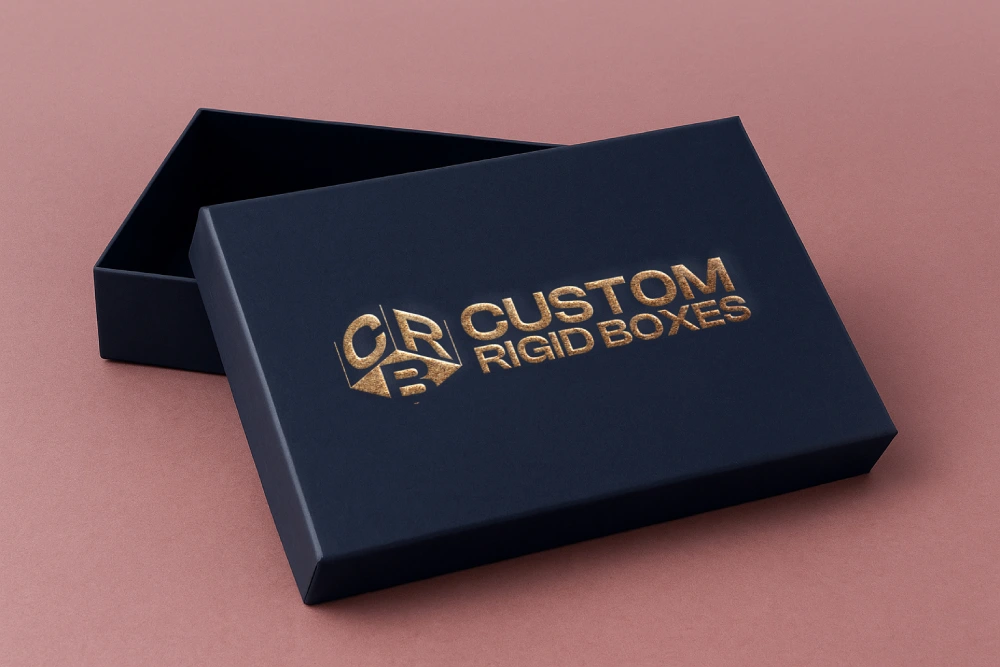
Metallic foil is the most popular choice for luxury packaging, highlighting premium brand logos. It provides a high-shine, reflective metal look in colors like gold, silver, copper, and rose gold.
Holographic Foil
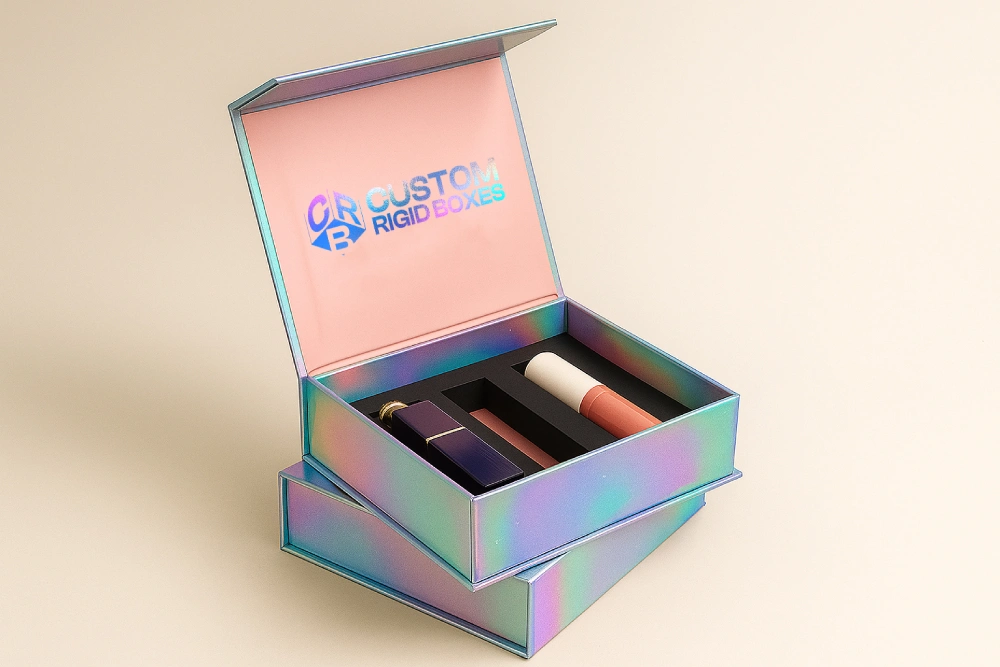
This type can create a dynamic, multi-colored, 3D rainbow effect that changes as the packaging moves. It is also often used for anti-counterfeiting features and visual appeal for promotional products packed in subscription boxes.
Gloss Pigment Foil
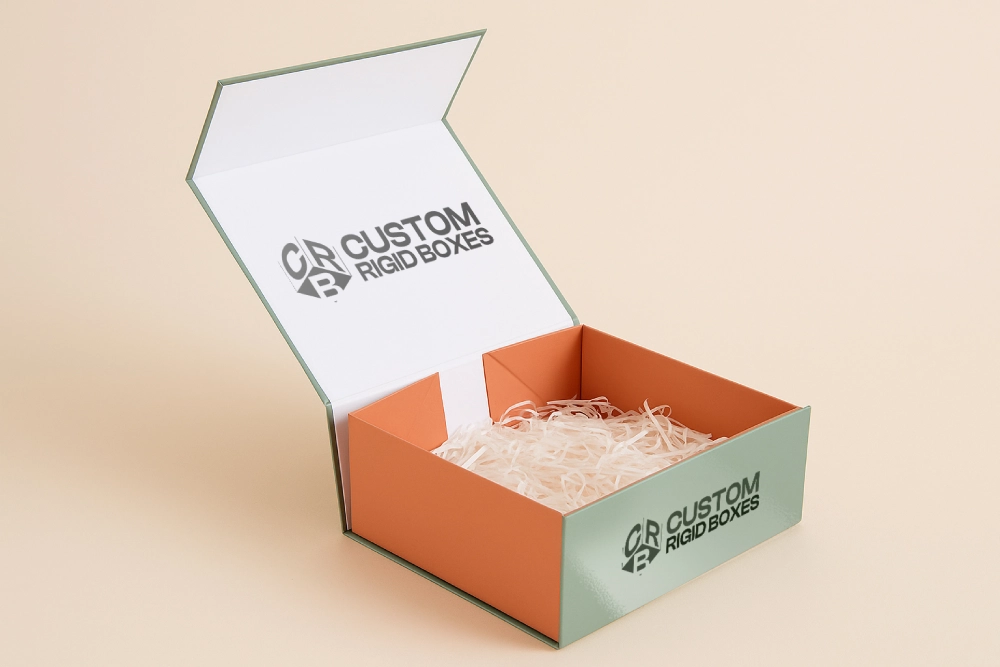
This foil combines high gloss with a non-metallic finish across a variety of colors.
Matte Pigment Foil
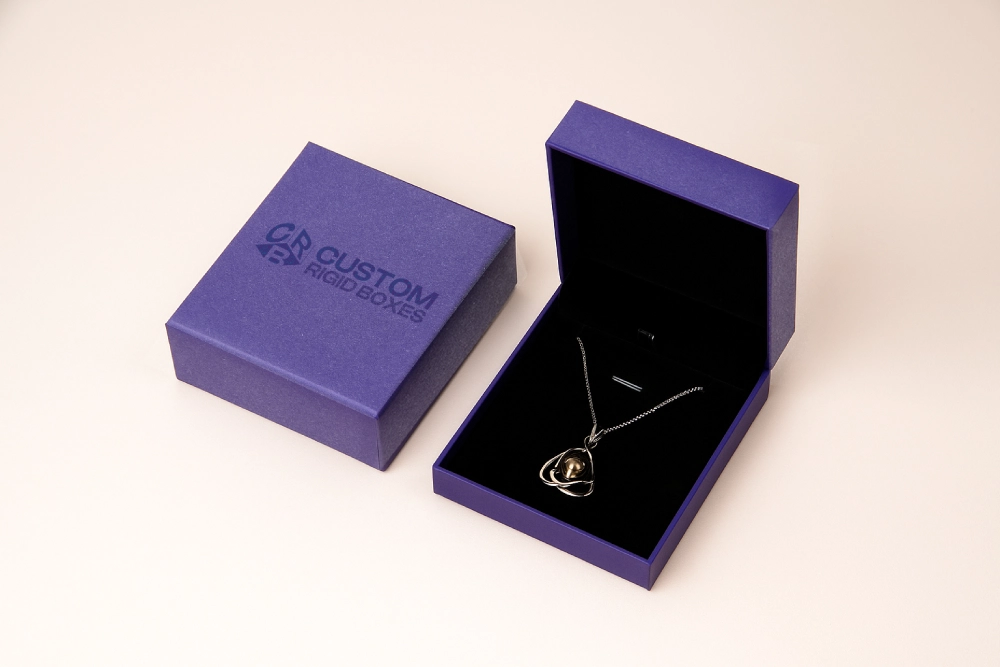
Matte pigment foil offers a subtle appearance with deep color, perfect for an elegant touch on electronics or jewelry boxes.
Pearlescent Foil
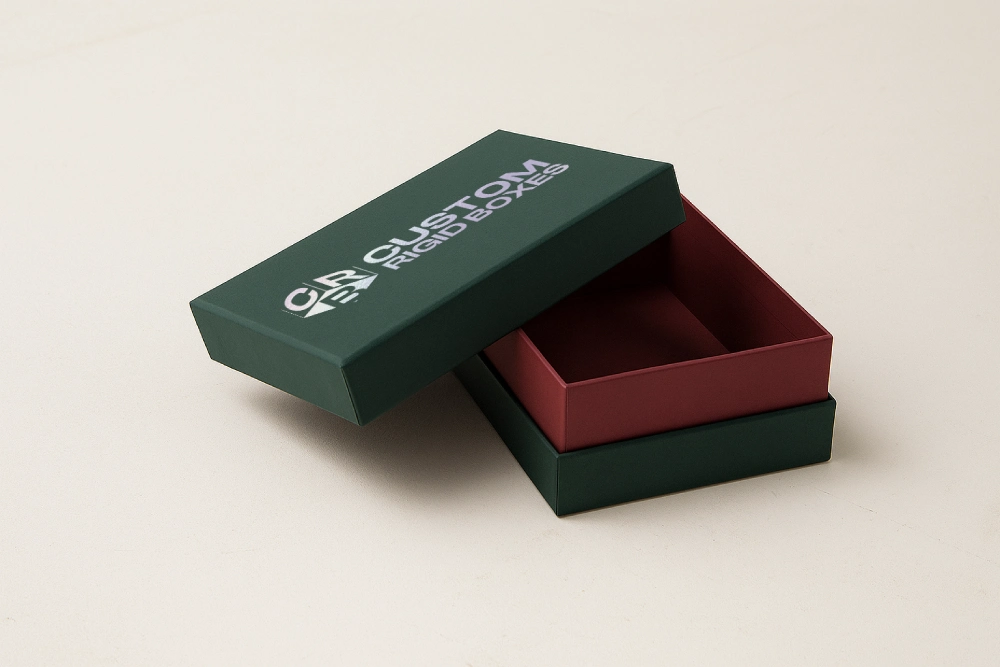
This foil type creates a soft, elegant sheen without intense color or high reflectivity.
Specialty/Textured Foils
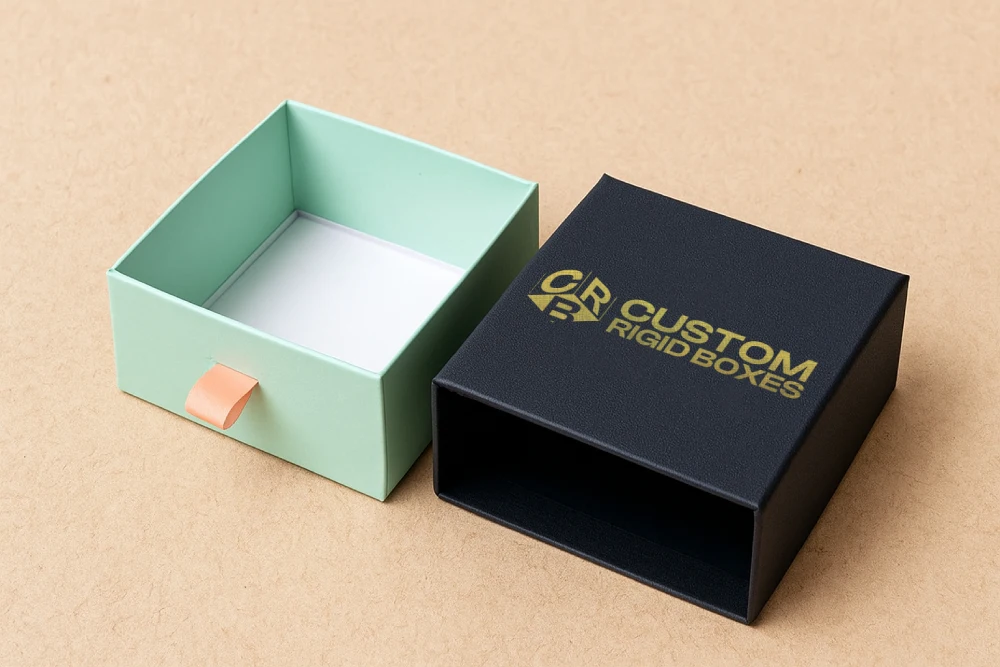
Specialty, also known as textured foil, represents unique textures such as brushed metal, leather, or wood grain, adding another tactile dimension to your product packaging.
Considering the options above, which one is ideal for your business packaging? Well, it completely depends on how you want your packaging to look.
Here’s a comparison table to guide you.
| Foil Type | Characteristics | Best for |
| Metallic Foil | A high-shine, reflective metal look in colors like gold, silver, copper, and rose gold | Premium brand logos |
| Holographic Foil | A dynamic, multi-colored, 3D rainbow effect |
|
| Gloss Pigment Foil | It combines high gloss with a non-metallic finish |
|
| Matte Pigment Foil | It offers a subtle appearance with deep color |
|
| Pearlescent Foil | A soft, elegant sheen without intense color or high reflectivity |
|
| Specialty/Textured Foils | Unique textures such as brushed metal, leather, or wood grain |
|
The Benefits of Using Foil Stamping
Foil stamping is more than just a decorative touch; it is a strategic business choice to elevate your packaging design.
Whether you want to apply it to candle boxes or perfume boxes, foil stamping benefits your business in many ways.
Enhanced Visual Appeal
The reflective finish of foil catches the light, making your products instantly noticeable on a busy shelf.
Increased Perceived Value
It gives products a high-end appearance, which can justify a higher price point and improve overall brand perception.
Durability
The heat-activated bonding process creates a durable finish that resists scratching, fading, and general wear and tear. Thus, you can rest assured that your packaging design remains perfect.
Flexibility
Foil stamping can be combined with other finishing techniques, such as aqueous coating, embossing, varnish, and glossy coating.
Brand Differentiation
A unique foil design helps your brand stand out by creating a memorable unboxing experience.
How Famous Brands Benefit from Foil Stamping?
Numerous worldwide brands, especially in the luxury, cosmetic, and premium goods sectors, use foil stamping to enhance their product packaging.
Here are some brands that you can learn from:
- Tiffany & Co.: The brand applies hot foil stamping to add a luxurious feel to its iconic packaging.
- Chanel: Chanel uses foil stamping on its packaging to reinforce its premium identity.
- Yves Saint Laurent (YSL) Beauty: The famous brand uses gold foil finishes in its cosmetic packaging to convey a sense of self-indulgence.
In Summary
No doubt, foil stamping is one of the most effective ways to create a premium finish, transforming simple packaging into something luxurious. This method is often used to highlight business logos, text, or decorative elements.
Foil stamping benefits businesses in many ways, including enhanced visual appeal, increased perceived value, durability, flexibility, and brand differentiation. Nevertheless, it’s worth applying this modern finish to your custom packaging boxes.
FAQs
What is foil stamping?
Foil stamping is a specialized printing process that applies a thin layer of metallic or pigmented foil to a surface.
What’s the difference between hot foil and cold foil stamping?
Hot foil stamping uses heat and pressure with an engraved die, while cold foil stamping uses a UV-cured adhesive applied via standard printing plates.
What are the types of foils used in hot stamping?
The types of foils used in hot stamping include metallic foil, holographic foil, gloss pigment foil, matte pigment foil, pearlescent foil, and specialty/textured foils.
What are the benefits of using hot foil stamping?
Foil stamping benefits businesses in many ways, including enhanced visual appeal, increased perceived value, durability, flexibility, and brand differentiation.


